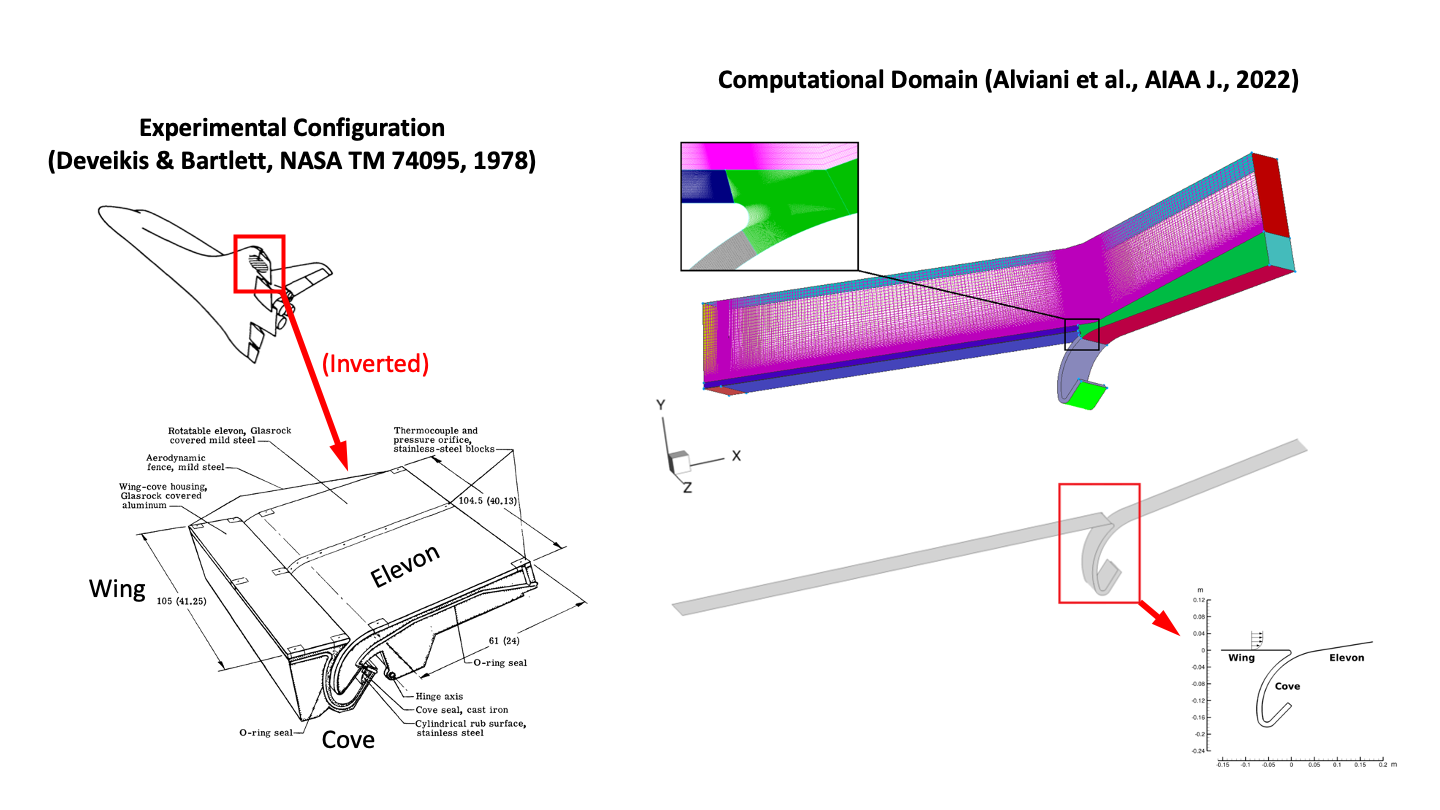
The juncture of a wing and an elevon requires a gap to allow movement. That gap configuration (called a cove) was present on the Space Shuttle, and NASA carried out several experiments on heat transfer in the gap. We have performed detached eddy simulations (IDDES) of one of these experiments at Mach 7, and we have uncovered flow unsteadiness and an interaction between the gap flow and the reattaching shear layer. The full details are reported in our AIAA Journal article.
The configuration is shown below. The NASA experiments were carried out on a scale model of the wing and elevon of the Space Shuttle (Deveikis and Bartlett, NASA TM 74095, 1978). Our computations encompassed a three-dimensional centerline slice of the experimental configuration. The calculations were carried out on a grid of about 230 million cells using the CREATE-AV Kestrel KCFD code.
The video below shows the magnitude of the density gradient in vicinity of the mouth of the cove. Flow is from left to right, and an expansion is visible near the cove lip. Resolved turbulence appears in the simulation after separation, leading to highly unsteady reattachment in the presence of an oblique shock. Large-scale motions are apparent over the millisecond time scale of the video.
The next video below shows an oblique view of the same region, with iso-surfaces of the Q-criterion, colored by velocity magnitude. A portion of the separated, turbulent shear layer is seen to be ingested into the cove, whereas another portion enters the redeveloping boundary layer on the elevon. Large-scale turbulence structures are evident in the flow.
The unsteadiness of the reattachment line of strong interest because of the intense pressure and temperature fluctuations that motion generates. To illustrate this behavior, the following video shows the magnitude of the skin friction on the windward surface of the elevon, including a portion of the cove.
In the mean, reattachment occurs along a line in the z-direction. Instantaneously, however, this region is highly unsteady and three-dimensional. Reattachment moves upstream and downstream with motions on a variety of spatial and temporal scales. The line is not always coherent: it sometimes breaks up into cells. Also apparent are streamwise streaks that may be the result of streamline curvature and a centrifugal instability. Evidence of Kelvin-Helmholtz instability (waves propagating downstream) is also present.